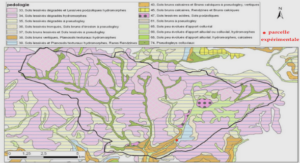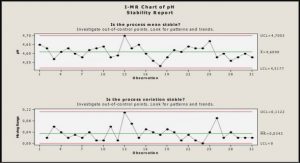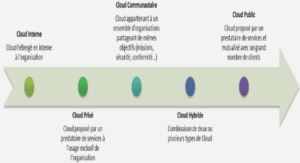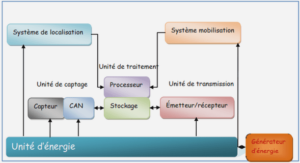Introduction of AA3xxx alloys
Due to their relatively low cost, workability, and excellent corrosion resistance, traditional AA3xxx series aluminum alloys are widely used in the industrial production, such as architecture, packaging and automobile.
However, the good elevated-temperature properties of AA3xxx alloys are often ignored. Nowadays, the growing demand for high performance and lightweight structural components at elevated temperatures (250 to 350℃) is a challenge for weight-sensitive automotive and aerospace industries. The traditional precipitation-strengthened aluminum alloys such as 2xxx, 6xxx and 7xxx can hardly meet the requirement of elevated-temperature mechanical properties, because of the rapid coarsening of nano-scale precipitates at elevated temperature (over-aging effect). In recent years, the dispersoid strengthening in 3xxx aluminum alloys that can improve the mechanical properties at both room and elevated temperatures has been discovered. Although Al-Mn-Mg 3xxx alloys are traditionally classified as non-heat-treatable alloys, the precipitation of thermally stable α-Al(MnFe)Si dispersoids during heat treatment and hence the improvement of high temperature properties in 3004 alloy have been recently reported . The combination of those properties makes 3xxx alloys especially attractive for elevated-temperature applications.
Microstructure of AA3xxx alloys
Intermetallic particles
Serval studies have been conducted on the microstructure evolution during different heat treatments in 3xxx alloys, mainly focusing on 3003 and 3004 alloys . The as cast microstructure of 3003 and 3004 alloys consist of mainly Al6(Mn,Fe), α-Al(Mn,Fe)Si and Mg2Si intermetallic phases. During solidification, constituent particles Al6(Mn,Fe) and α-Al(Mn,Fe)Si formed in interdendritic arm spaces or along grain boundaries. The constituent particles are originally eutectic particles that distributed in the interdendritic regions during solidification.
Dispersoid particles
During heat treatment, a considerable number of α-Al(Mn,Fe)Si dispersoids precipitate and the size and amount of dispersoids are dependent on the alloy chemistry and heat treatment condition. The dispersoids mainly distribute in the corns of dendrite arms. The area with a large number density of dsipersoids can be defined as the dispersoid zone. On the other hand, very few dispersoids precipitated in the grain boundaries and the interdendritic areas. These locations are defined as the dispersoid free zone (DFZ). All the dispersoid free zones locate in the Mn depleted areas formed during solidification, so the cause of dispersoid free zone is the segregation of Mn elements. Due to the large scale of dispersoid zone and dispersoid free zone, TEM cannot be used for observation. The dispersoid zone and dispersoid free zone can be observed using optical microscope and SEM with etched samples.
Effect of chemical composition on AA3xxx alloys
Mn :Mn element is a major alloying element of AA3xxx alloys, as much as 1.82 wt.% are soluble in aluminum matrix. However, in commercial AA3xxx alloys, the content of Mn is often less than 1.25%. Because Fe decreases the solubility of Mn, and therefore increases the probability of forming large primary intermetallic particles of Al6(Mn,Fe), which can have a negative effect of ductility. During solidification, large amount of Mn is retained in solution in aluminum matrix, the reminder is present as Al6(Mn,Fe) constituent particles. During homogenization, α-Al(Mn,Fe)Si dispersoids precipitate from the supersaturated matrix. Adding Mn element could enhance the precipitation of α-Al(Mn,Fe)Si dispersoids and improve the yield strength, as long as the concentration of Mn was under the solid solution limit.
Fe :The addition of Fe into AA3xxx alloys decreases the solubility of Mn which leads to the precipitation of constituent particles Al6(Mn,Fe) and α-Al(Mn,Fe)Si. On the other hand, Fe and Mn can substitute each other freely in α-Al(Mn,Fe)Si dispersoids.
According to previous literature [8], the content of Fe significantly affects the intermetallic particles, dispersoids and mechanical properties at both room and elevated temperatures. Results show that while the content of Fe is 0.1%, the dominant intermetallic particles are α-Al(Mn,Fe)Si, However, the concentration of Fe increases to 0.3%~0.6%, the dominant intermetallic particles change from α-Al(Mn,Fe)Si to Al6(Mn,Fe). The alloys with 0.3% Fe possess the finest and highest volume fraction of dispersoids A significant improvement on the yield strength and creep resistance at elevated temperature are achieved by 0.3% Fe addition.
Cu: Cu element is a main alloying element of AA2xxx alloys (Al-Cu) and important alloying element of AA7xxx alloys (Al-Zn-Mg-Cu) and AA6xxx alloys (Al-Mg-Si-Cu). By applying aging heat treatment at 100°C~200°C, nano-scale metastable Al2Cu [39], Mg(Zn,Al,Cu)2 and AlCuMgSi (Q phase) precipitated. Metastable Mg(Zn,Al,Cu)2 and AlCuMgSi (Q phase) possessed lower coarsening rate than metastable MgZn2 and Mg2Si. It could be contributed to the addition of Cu into the alloys. The influence of Cu on the precipitation and coarsening behaviour of α-Al(Mn,Fe)Si dispersoids had never reported before. In the previous study, no literature reported that Cu would improve the thermal stability of α-Al(Mn,Fe)Si dispersoids, however, a few studies confirmed that Cu would enhanced the thermal stability of AA6xxx alloys. This was due to the better thermal coarsening resistance of metastable Q phases compared with metastable Mg2Si . Similar phenomenon was also found in AA7xxx alloys, the addition of Cu decreased the coarsening rate of MgZn2.
Mechanical properties at elevated temperature
Strengthening mechanisms for yield strength at elevated temperature
The yield strength of materials measured at elevated temperature is a very important property to evaluate the performance of materials for elevated-temperature applications. The yield strength contribution at elevated temperature could be divided into following three parts: aluminum matrix contribution, secondary precipitation particles strengthening contribution and solid solution strengthening contribution. According to previous literature, the yield strength of commercial pure aluminum alloys AA1100-O at 315°C is 14 MPa. The precipitation of secondary strengthening phases can effectively slow down the movement of dislocations even at elevated temperature. However, the strengthening mechanism depends on the size of strengthening phases. According to literature, while the size of strengthening phase is less than ~8nm, the strengthening mechanism is dislocation climbing mechanism at 300 °C. On the other hand, Orowan bypass strengthening mechanism is the dominant strengthening mechanism when the size is larger than 8nm.
Creep phenomenon and mechanisms at elevated temperature
Creep phenomenon :Creep is a permanent deformation of materials under constant load and at constant temperature. It can occur as a result of long-term exposure to high levels of stress that are still below the yield strength of the material .
The strain rate of the primary creep region is very high due to the material elastically and plastically responds to the applied load. While the deformation keeps increasing, the material is strengthened by work hardening, which leads to the decrease of the creep rate. As the deformation continues, primary creep stage gradually transits into the secondary creep stage.
This stage is also called the steady-state creep. The creep rate almost does not change with time under a constant load. This is a result of the balance between recovery and hardening. The secondary creep region dominates most of the time of the test. Therefore, the secondary creep rate is one of the most important design parameters derived from the creep curve for the design of components. As creep continuing, the secondary creep changes into the third stage (tertiary creep).Tertiary creep only occurs in tensile creep test. Continuous deformation produces voids or internal cracks which decrease the cross-section and increase the stress. As a result, a neck occurs at tertiary stage of the creep, which ends up the fracture of the materials . The tertiary stage creep possesses a much higher creep rate.
Creep mechanism: Creep mechanism is highly dependent on the applied temperature and stress. Weertman .The creep mechanism is categorized into four types: dislocation glide creep, dislocation creep, Coble creep, Nabarro-Herring creep.
(A) Dislocation glide creep: Creep resulting from a dislocation glide mechanism occurs at high stress levels .
Creep is controlled by the movement of dislocation. Dislocation glide creep has a strong dependence on the applied stress and the intrinsic activation energy, but no grain size dependence. The creep rate depends on the obstacles which slow down the movement of dislocations such as precipitates, dispersoids, solute atoms and other dislocations.
(B) Dislocation creep :Dislocation creep tends to occur by dislocation glide and climb aided by vacancy diffusion (when an obstacle is to be overcome); this is called dislocation creep. This mechanism should not be confused with Harper-Dorn creep, which relies exclusively on dislocation climb. At elevated temperature, if a dislocation is stopped by obstacles, climb may permit it to pass the obstacles. Dislocation climb requires diffusion of vacancies to finish the climbing process. Therefore, the diffusion rate is very important for this creep mechanism.
Nabarro–Herring creep: Nabarro–Herring creep is a form of diffusion creep. It involves the diffusion of vacancies inside the grain. The vacancies move in such a way as to produce an increase in length of the grain along the direction of applied stress. Hence, the vacancies move from the top and bottom region to the lateral regions of the grain. Nabarro-Herring creep dominates at high temperatures and low stresses. Nabarro–Herring creep has a weak stress dependence and a moderate grain size dependence. Nabarro–Herring creep is strongly temperature dependent.
Coble creep: In 1963, Coble proposed a mechanism by which creep was instead controlled by grain-boundary diffusion. He suggested that, at lower temperatures (T<0.7 Tm), the contribution of grain-boundary diffusion is larger than that of self-diffusion through the grains.
Thus, diffusion of vacancies along grain boundaries controls creep. The strain-rate suggested by Coble creep is strongly size dependence .
|
Table des matières
Chapter 1 Introduction
1.1 Background
1.2 Objectives
References
Chapter 2 Literature review
2.1 Introduction of AA3xxx alloys
2.2 Microstructure of AA3xxx alloys
2.2.1 Intermetallic particles
2.2.2 Dispersoid particles
2.3 Effect of chemical composition on AA3xxx alloys
2.3.1 Mn
2.3.2 Fe
2.3.3 Mg
2.3.4 Si
2.3.5 Cu
2.3.6 Sc and Zr
2.4 Mechanical properties at elevated temperature
2.4.1 Strengthening mechanisms for yield strength at elevated temperature
2.4.2 Creep phenomenon and mechanisms at elevated temperature
References
Chapter 3 Experimental
3.1 Alloys preparation and compositions
3.1.1 The effect of Mg and Si
3.1.2 The effect of metastable Mg2Si and dislocations
3.1.3 The effect of Sc and Zr
3.1.4 The effect of Cu
3.2 Heat-treatment conditions
3.2.1 The effect of Mg and Si
3.2.2 The effect of metastable Mg2Si and dislocations
3.2.3 The effect of Sc and Zr
3.2.4 The effect of Cu
3.3 Mechanical properties
3.3.1 Microhardness
3.3.2 Electrical conductivity
3.3.3 Yield strength
3.3.4 Creep
3.4 Microstructure observation
Reference
Chapter 4 Microstructure, elevated-temperature mechanical properties and creep resistance of dispersoid-strengthened Al-Mn-Mg 3xxx alloys with varying Mg and Si contents
4.1 Introduction
4.2 Experimental
4.3 Results
4.3.1 As-cast Microstructure
4.3.2 Microstructure after heat treatment
4.3.3 Electrical conductivity and microhardness
4.3.4 Yield strength at 300℃
4.3.5 Creep resistance at 300℃
4.4 Discussion
4.5 Conclusions
References
Chapter 5 Effect of metastable Mg2Si and dislocations on α-Al(MnFe)Si dispersoid formation in Al-Mn-Mg 3xxx alloys
5.1 Introduction
5.2 Experimental procedures
5.3 Results and discussion
5.3.1 Precipitation of α-Al(MnFe)Si dispersoids in the base alloy
5.3.2 Precipitation of α-Al(MnFe)Si dispersoids in the M1 alloy
5.3.3 Precipitation of α-Al(MnFe)Si dispersoids in the deformed M1 alloy
5.3.4 The effect of Mg and deformation on microhardness
5.3.5 Metastable Mg2Si-based nucleation mechanism
5.3.6 Dislocation-based nucleation mechanism
5.4 Conclusions
References
Chapter 6 Improvement of mechanical properties and creep resistance in Al-Mn-Mg 3004 alloy with Sc and Zr addition
6.1 Introduction
6.2 Experimental procedure
6.3 Results and discussion
6.3.1 Microstructures in as-cast and heat-treated conditions
6.3.2 Precipitation of α-Al(Mn,Fe)Si dispersoids and Al3(Sc,Zr) precipitates
6.3.3 Mechanical properties at ambient and elevated temperatures
6.3.4 Quantitative analysis of yield strength at ambient and elevated temperatures
6.3.5 Prospect for the synergetic strengthening effect of co-existing α-Al(Mn,Fe)Si dispersoids and Al3(Sc,Zr) precipitates
6.4 Conclusions
References
Chapter 7 The influence of Cu addition on dispersoid formation and mechanical properties of Al-Mn-Mg 3004 alloys
7.1 Introduction
7.2 Experimental procedures
7.3 Results and discussion
7.3.1 Influence of Cu on microstructure
7.3.2 Influence of Cu on mechanical properties
7.4 Conclusions
References
Chapter 8 Conclusions and Recommendations
8.1 Conclusions
8.2 Recommendations





